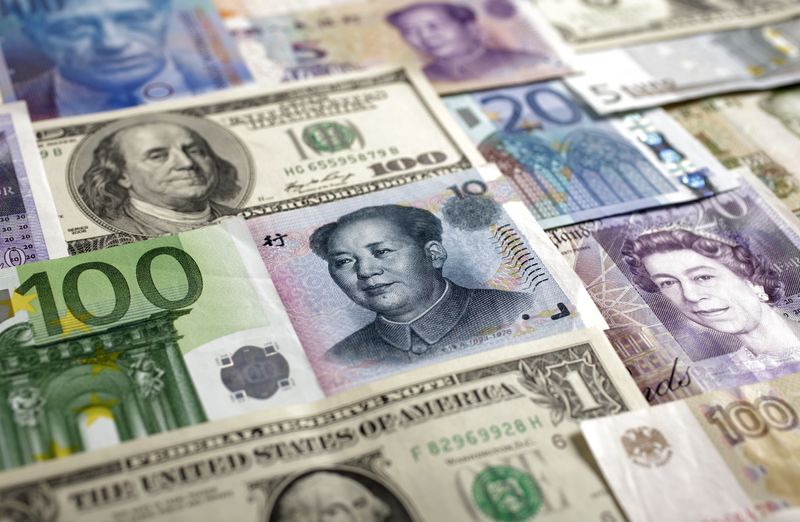Global FX trading hits record $7.5 trln a day

© Reuters. FILE PHOTO: Arrangement of various world currencies including Chinese Yuan, Japanese Yen, US Dollar, Euro, British Pound, Swiss Franc and Russian Rouble pictured in Warsaw, January 26, 2011. REUTERS/Kacper Pempel
By Marc Jones and Alun John
LONDON (Reuters) – Currency trading has hit a record $7.5 trillion-a-day, a comprehensive new study has shown, with the dollar retaining its global dominance but some signs too that London’s position as the world’s top trading hub is being eroded by Brexit.
The triennial survey carried out by central bank umbrella group the Bank for International Settlements collated data from April as markets were grappling with the Ukraine war and early stages of the aggressive U.S. interest rate hike cycle.
The headline $7.5 trillion daily turnover figure marked a historically modest 14% increase from the $6.6 trillion recorded in 2019 and was driven by a mix of higher foreign exchange spot, swaps and forwards market volumes.
Turnover of FX swaps accounted for 51% of global turnover, up from 49% in 2019, whereas spot trades fell to 28% from 30% and the share of outright forwards remained at 15%.
This “was the lowest triennial growth rate in all but two Surveys since 2004,” the BIS said, “despite data collection coinciding with heightened FX volatility due to changing expectations about the path of future interest rates in major advanced economies, rising commodity prices and geopolitical tensions following the Russian invasion of Ukraine”.
The survey, which is viewed as the most comprehensive overview of global currency market trading, collected data from more than 1,200 banks and dealers in 52 countries.
Unwavering U.S. dollar dominance meant it was involved in 88% of all trades – a level it has maintained for the past decade, while the euro remained the second most actively traded currency despite a small drop in its share to 31%.
Other top currencies such as the Japanese yen and British pound maintained their near 17% and 13% respective shares, while the saw the biggest rise to 7% from 4%, which hoisted it to fifth in the overall rankings from eighth.
volumes were notably not included this time around after Russia’s BIS membership was rescinded after the invasion of Ukraine, although it share had been less than 1% in 2019 anyway.
LONDON FALLING
The demise of Libor and Brexit look to have reshaped the world’s over-the-counter (OTC) interest rate derivatives market, where daily turnover dropped to $5.2 trillion from $6.4 trillion in April 2019.
Banks and companies use interest rate swaps to insure themselves against unexpected moves in borrowing costs.
But after banks were fined for trying to rig the London Interbank Offered Rate or Libor, most of the rate’s permutations across five currencies were scrapped at the end of 2021 and replaced with rates compiled by central banks.
“The most significant factor contributing to the decline in turnover is the continuing shift away…
